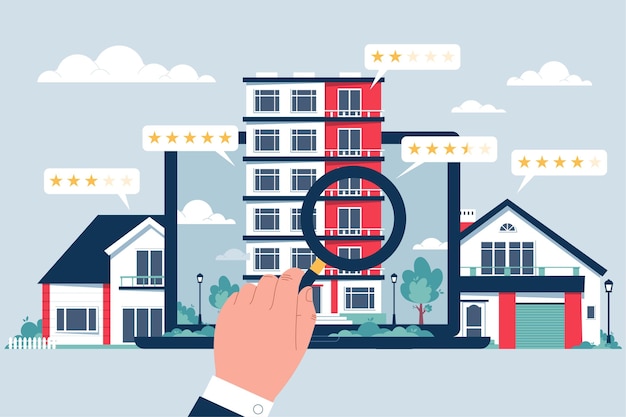
Understanding the Rental Real Estate Enterprise Safe Harbor
Investing in rental properties is a great way to build long-term wealth. Yet, for property owners and investors, the world of taxes often feels complex and confusing. This is where the rental real estate enterprise safe harbor provision comes in.
The IRS created guidelines for rental property owners. These rules help some people qualify for tax benefits through the Qualified Business Income (QBI) deduction.
Knowing the benefits of this safe harbor can help investors, landlords, and property managers. They can make smarter choices for short-term tax savings and long-term growth. In this article, we will discuss five key benefits of the rental real estate enterprise safe harbor. We will also show how it connects to broader strategies, like enterprise asset management real estate.
What Is the Rental Real Estate Enterprise Safe Harbor?

Before diving into the benefits, let’s make sure we understand the basics. The IRS created the rental real estate enterprise safe harbor. This helps property owners figure out if their rental activities count as a business for tax reasons.
Related Article: Gailey Enterprises Real Estate | Trusted Property Solutions for Buying, Selling & Investing
This is important. Eligible businesses can claim the Qualified Business Income deduction, which is up to 20%. This helps lower taxable income. To qualify under the safe harbor:
- Property owners must keep separate books and records for rental activities.
- At least 250 hours of rental services must be performed per year (management, maintenance, advertising, etc.).
- Owners must keep contemporaneous records of these activities.
- One enterprise cannot combine commercial and residential properties.
Once these requirements are met, the rental activity becomes a trade or business. This means you can access important tax deductions.
1. Clear Qualification for Tax Deductions
The most important benefit of the rental real estate enterprise safe harbor is clarity. Tax rules for rental properties can be unclear. This often leaves investors unsure about qualifying for business deductions. The safe harbor eliminates this guesswork.
When you meet the requirements, you know that your rental activities count as a business. This means you can take advantage of the 20% QBI deduction, which can result in significant tax savings.
If your rental real estate business makes $100,000 in qualified income, you could reduce your taxable income by $20,000. Over time, this creates a major financial advantage. This clarity also aids in enterprise asset management for real estate. You can confidently plan cash flows, investment strategies, and long-term returns. This way, you avoid tax surprises.
2. Encourages Professional Record-Keeping
Another key benefit is that safe harbor forces property owners to adopt better record-keeping habits. The IRS requires:
- Organized financial books.
- Logs of maintenance, repairs, and management activities.
- Documentation of hours spent on rental services.
At first, this may seem like extra work. It encourages owners to adopt best practices in enterprise asset management for real estate. Tracking all expenses and activities helps investors see their rental business more clearly. This level of organization makes it easier to:
- Spot overspending on repairs.
- Identify underperforming properties.
- Check which assets generate the best returns.
Keeping records changes rental activity from a simple income idea into a real business.
3. Better Separation of Personal and Business Assets
Many small landlords run into trouble by mixing personal and business finances. Safe harbor guidelines prevent this. The IRS wants owners to keep separate books and accounts.
Read Also: How to Get Your Real Estate License in California?
This helps them see their rental operations as separate businesses. This separation not only improves tax compliance but also strengthens financial discipline. For instance, investors can:
- Track rental cash flows independently from personal budgets.
- Reinvest profits into upgrades for the property.
- Use clean records to secure financing for future purchases.
This fits with enterprise asset management in real estate. Here, each asset is seen as part of a larger portfolio. Investors can treat rental properties like business assets. This helps them make decisions based on data, not emotions.
4. Protection in Case of an Audit
Tax audits are stressful, especially when rules are unclear. The rental real estate enterprise safe harbor gives protection through a clear framework. If audited, landlords who have followed safe harbor rules can show the IRS:
- Detailed records of rental activities.
- Logs proving 250+ hours of rental service.
- Clear financial books.
This evidence reduces the risk of disputes with tax authorities. It also reassures investors that they are operating within the law. For those managing many properties, this is invaluable. Investors combine safe harbor compliance with enterprise asset management in real estate. This creates a strong and clear business structure that can handle scrutiny.
5. Supports Long-Term Growth and Scaling
The most underrated benefit of safe harbor is how it supports growth.
Property owners set the stage for growth by:
-
Using professional systems
-
Keeping clean records
-
Maintaining structured operations
Consider this:
A single landlord with one property may not see the value right away. But as they get more properties, these systems allow them to scale efficiently. Safe harbor compliance ensures that each property is run like a business unit.
This structured approach ties back to enterprise asset management in real estate. Investors who treat their rental enterprises professionally are more likely to:
- Attract business partners.
- Secure loans with confidence.
- Expand into new markets.
Over time, the safe harbor not only cuts taxes but also helps turn rental properties into a serious, growth-focused business.
How Safe Harbor Connects with Enterprise Asset Management in Real Estate?

Enterprise asset management in real estate aims to boost asset value during their entire lifecycle. Safe harbor contributes to this by:
- Defining rental real estate as a legitimate business.
- Encouraging structured record-keeping.
- Creating financial clarity that aids in investment decisions.
Safe harbor and asset management principles together form a strong framework for landlords. Owners should see rental properties not as separate investments. They are part of a unified business. This includes tax benefits, risk protection, and chances for long-term growth.
Practical Steps to Leverage Rental Real Estate Enterprise Safe Harbor
If you’re a property owner, here’s how to make the most of this provision:
- Set up separate accounts for rental income and expenses.
- Keep detailed records of every activity—repairs, marketing, tenant communications, etc.
- Track service hours to ensure you meet the 250-hour annul rule.
- Maintain compliance annually, as the IRS may request records.
- Consult a tax professional who understands both QBI deductions and real estate rules.
Following these steps helps you meet safe harbor standards. It also boosts the performance of your enterprise asset management in real estate.
Conclusion
The rental real estate enterprise safe harbor isn’t a tax guideline. It’s a strong tool that helps turn rental properties into well-managed business assets. Its five key benefits are:
-
Clear qualifications for tax deductions.
-
Stronger record-keeping
-
Separation of personal and business assets
-
Audit protection
-
Support for long-term growth
These make it essential for landlords and investors. Safe Harbor and enterprise asset management in real estate simplify rental activities. They make them easier, larger, and more profitable. If you want to build wealth through property, follow this framework. It's not about saving on taxes; it's about creating a strong professional base for the future.

